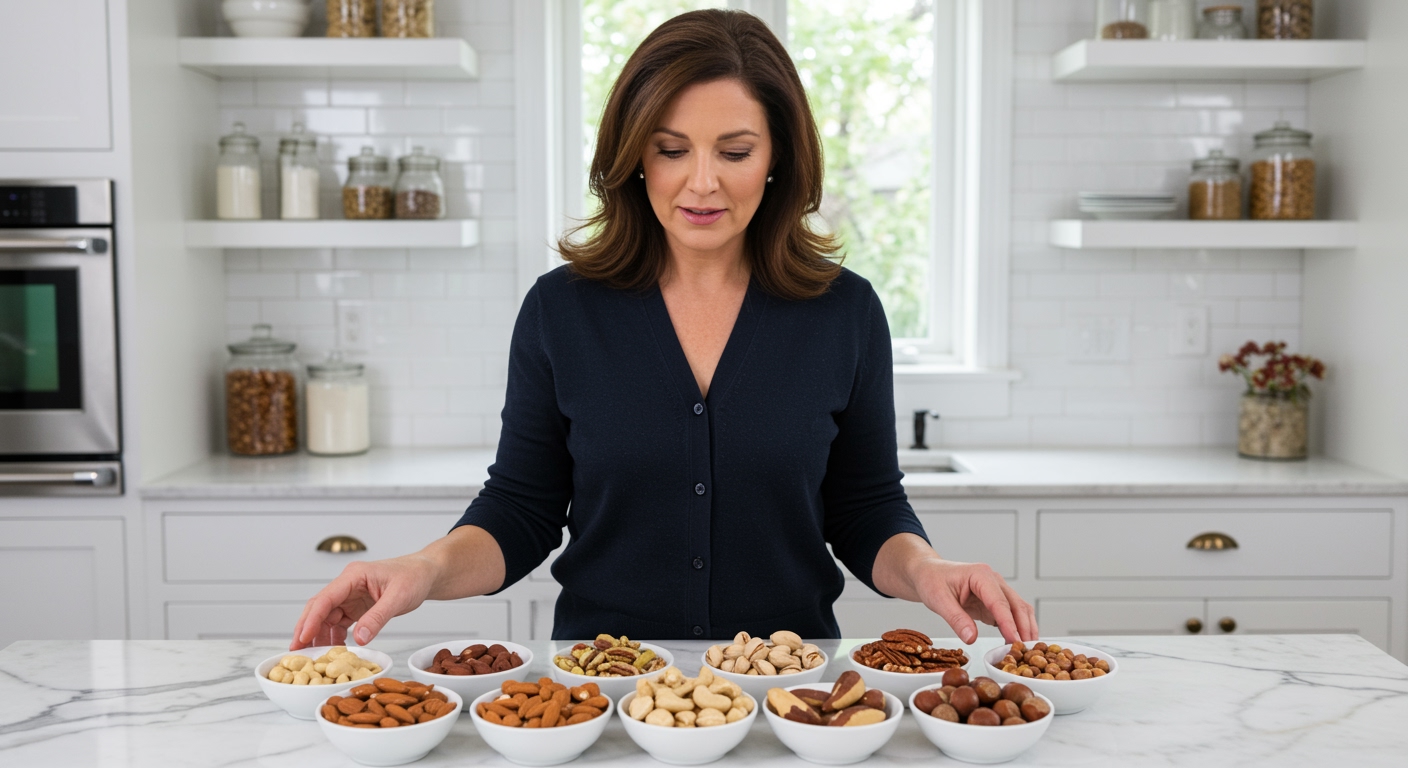✪ Key Takeaway: Nuts are excellent for diabetes as they help stabilize blood sugar, improve insulin sensitivity, and reduce complications.
Introduction
Your doctor just told you that you have diabetes, and suddenly every food choice feels like walking through a minefield.
You might be wondering if nuts are safe for your blood sugar levels, especially since they contain calories and some natural sugars.
Hi, I’m Abdur, your nutrition coach, and today I’m going to explain exactly how nuts affect your diabetes and why they might be one of the best foods you can eat for blood sugar control.
How Do Nuts Affect Blood Sugar Levels?
Nuts have a low glycemic index, which means they cause a slow and steady rise in blood sugar rather than dangerous spikes.
When you eat nuts, the combination of healthy fats, protein, and fiber works together to slow down digestion and glucose absorption.
Research shows that people with diabetes who eat nuts regularly have better long-term blood sugar control compared to those who avoid them.
The fiber in nuts also feeds beneficial gut bacteria, which produce compounds that help your body use insulin more effectively.
Most nuts contain less than 6 grams of carbohydrates per ounce, making them an ideal snack for maintaining stable glucose levels throughout the day.
✪ Pro Tip: Eat nuts with higher-carb foods to slow down their absorption and prevent blood sugar spikes.
Which Nuts Are Best For Diabetes Management?
Almonds top the list because they contain the highest amount of fiber and magnesium, both crucial for blood sugar control.
Walnuts provide omega-3 fatty acids that reduce inflammation and improve insulin sensitivity in people with diabetes.
Pistachios have been shown in studies to lower post-meal blood sugar levels more effectively than other nuts.
Brazil nuts are rich in selenium, a mineral that helps protect against diabetic complications like nerve damage and heart disease.
Pecans and hazelnuts contain compounds called polyphenols that act like natural medicines for your blood vessels and insulin receptors.
Cashews, while slightly higher in carbs, still provide excellent blood sugar benefits when eaten in proper portions.
✪ Fact: Eating just one ounce of nuts daily can reduce diabetes complications by up to 17 percent.
What About Portion Sizes And Timing?
One ounce of nuts equals about 23 almonds, 14 walnut halves, or 49 pistachios – this is your ideal daily serving size.
Eating nuts between meals helps prevent the blood sugar dips that often lead to cravings and overeating at your next meal.
The best time to eat nuts is about 30 minutes before a carbohydrate-rich meal to maximize their blood sugar-stabilizing effects.
If you take diabetes medications, nuts can help prevent the dangerous low blood sugar episodes that sometimes occur between doses.
Spreading your nut intake throughout the day works better than eating a large amount all at once for sustained blood sugar control.
✪ Note: Always check with your doctor about timing if you take insulin or other diabetes medications.
Are There Any Nuts To Avoid With Diabetes?
Raw and unsalted nuts are always your best choice because added salt can worsen high blood pressure, a common diabetes complication.
Avoid honey-roasted, chocolate-covered, or sugar-coated nuts as these additions can cause significant blood sugar spikes.
Heavily salted nuts can increase your risk of kidney problems, which people with diabetes already face at higher rates.
Nut butters with added sugars should be limited, but natural almond or peanut butter can be excellent choices in small amounts.
Even healthy nuts become problematic if you eat too many – the calories can lead to weight gain that makes diabetes harder to control.
Trail mixes that combine nuts with dried fruits or candies defeat the blood sugar benefits that plain nuts provide.
The Bottom Line
Nuts are not just safe for diabetes – they are one of the most powerful foods you can eat to improve your blood sugar control and prevent complications.
The best medicine for diabetes often comes from your kitchen, not your pharmacy.
I would love to hear about your experience with nuts and diabetes management, so please share your questions or feedback in the comments below.
References
At NutritionCrown, we use quality and credible sources to ensure our content is accurate and trustworthy. Below are the sources referenced in creating this article:
- American Pistachio Growers: Blood Sugar Research
- PLOS One: Effects of Tree Nuts on Blood Lipids, Apolipoproteins, and Blood Pressure
- PMC: Tree Nuts and Peanuts as Components of a Healthy Diet
- Cleveland Clinic: A Diet Tip for People With Type 2 Diabetes: Eat More Nuts





